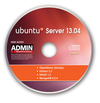« Previous 1 2
Version 5.2 of the Ruby framework
Ticket to Ride
Ruby on Rails (RoR) version 5.1 [1] introduced Secrets, a mechanism designed to ensure that a programming team can store encrypted passwords or API keys in a public repository. However, the community's response to this feature proved to be mixed. Many found it useless right from the start, because the team members still had to exchange a secret encryption key. Others found it practical, but still a little too cumbersome to set up and use.
At least for the latter group, Rails 5.2 (Figure 1) is a good thing: The developers abolished Secrets and replaced it with simpler credentials. Thus RoR automatically generates a central master key and stores it in the config/master.key file. Of course, this file must never end up in a repository, which is why it is entered in the .gitignore file by default. The user edits the credentials on the command line with
EDITOR=vim rails credentials:edit
in YAML format (Listing 1). The credentials can then be retrieved, as in Listing 2, with the Rails application and console, where the name of the application in the example is
...Buy this article as PDF
(incl. VAT)
Buy ADMIN Magazine
Subscribe to our ADMIN Newsletters
Subscribe to our Linux Newsletters
Find Linux and Open Source Jobs
Most Popular
Support Our Work
ADMIN content is made possible with support from readers like you. Please consider contributing when you've found an article to be beneficial.






